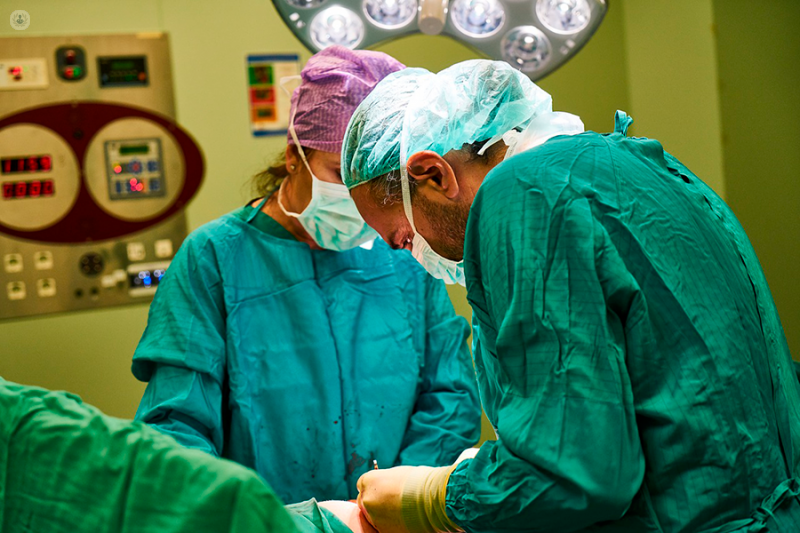The long and short of ureteroscopy
Written by:If you have kidney stones, what’s the best way to treat it? Leading consultant urologist Mr Andrew Ballaro explains what a ureteroscopy involves, and when it is preferable to other treatments for kidney stones.

What is a ureteroscopy?
Ureteroscopy is a short surgical procedure involving passing a specialised instrument into the ureter. The ureter is a long muscular tube which drains urine from the kidney down to the bladder.
A ureteroscopy is a way of get rid of stones that are in the ureter. Usually we fragmenting the stones with a laser and remove them with a small basket, allowing the urine to pass freely subsequently and resolving the pain.
Why would you need a ureteroscopy?
You would need a ureteroscopy in a number of situations.
If you have a kidney stone obstructing the ureter, that cause severe pain and usually needs emergency treatment.
Sometimes people have kidney stones which remain in the kidneys. In that situation we use a flexible ureteroscope which allows us to look up into the kidney and find the stone, manipulate it into a good position, and then fragment it using a laser again and removing the fragments with the basket.
There are a number of benefits of ureteroscopy compared with other methods of treating kidney stones. The main other method is lithotripsy, which involves sending shock waves into the kidney stone to break it up into fragments. Ureteroscopy is often preferable for a number of reasons:
- It allows us to collect a specimen of the stone and send it off to the laboratory. We can then analyse the stone and be able to inform the patient of any particular dietary modifications that they can perform to reduce the risk of further stone formation.
- Some stones up in the kidney can be very difficult to access and are not particularly amenable to lithotripsy – particularly the kidney stones in the lower pole at the end of long thin tracks of the kidney. Using a ureteroscopy allows us to visualise the stone and allow its complete removal without any residual fragments; which lithotripsy sometimes does not do.
How does a ureteroscopy work?
During rigid ureteroscopy, which is for stones in the ureter, a guide wire will be passed by passing an instrument through the urinary tract up into the ureter. Next, a long thin instrument called a ureteroscope is passed through the urethra up into the ureter to the position of the stone. The stone is then fragmented using a very thin laser fibre with high-energy laser pulses onto the stone and the stone is either dusted and the dust washed away, or fragmented into several particles and the particles then subsequently removed with the basket.
If the stone is up in the kidney, then a flexible ureteroscope is inserted, normally over a guide wire. It's a quick and straightforward procedure and the whole thing takes about 20 minutes to half an hour. The flexible ureteroscope is used to look around the kidney and to find the relevant stones and to break them up and remove the bits as fragments – or again, to dust them into tiny fragments which are then washed out leaving no remaining stones.
What happens after the procedure?
The advantage of ureteroscopy is that it's a day case procedure. So the patient is normally able to go home straight after the operation. Sometimes a ureter stent is left to allow the urine to drain freely which may need to be subsequently removed, but generally we manage to do the procedure without leaving any further stents.
There's normally a period of recovery of a few hours after the anaesthetic, but normally the patient is able to go home later on the same day. We will follow up with the patient with the result of the stone analysis, and usually we use imaging to prove that the stone has been removed completely.


